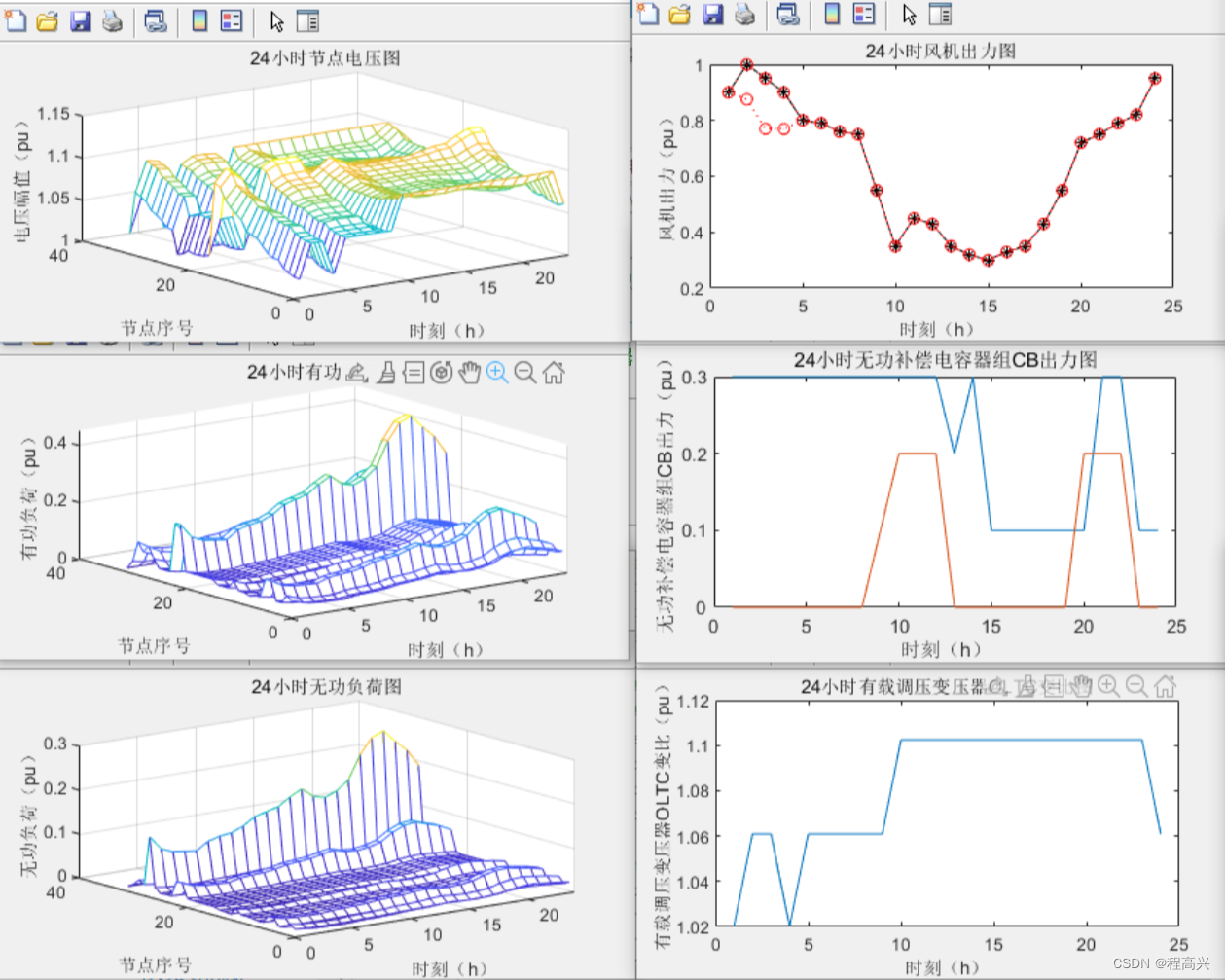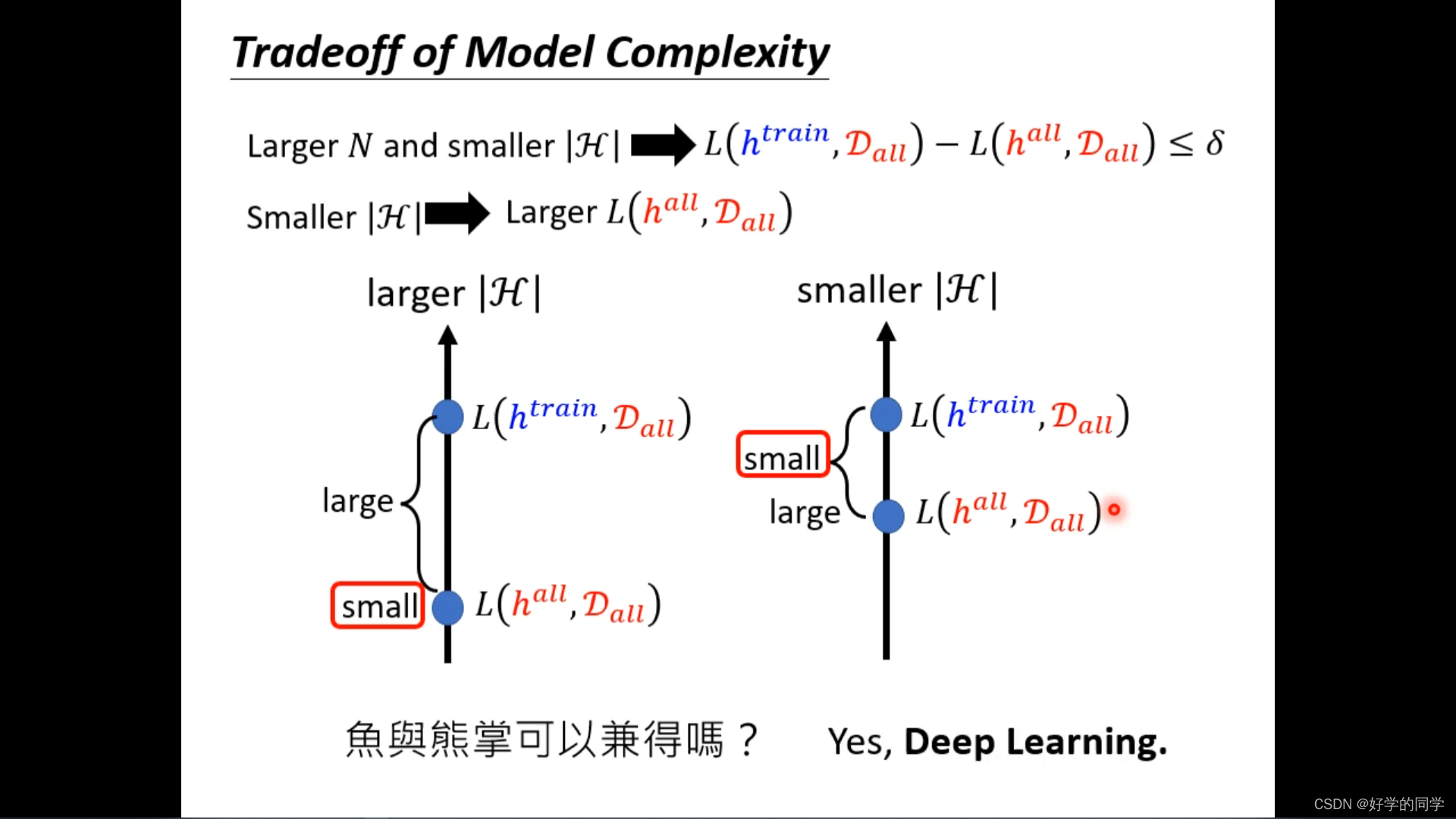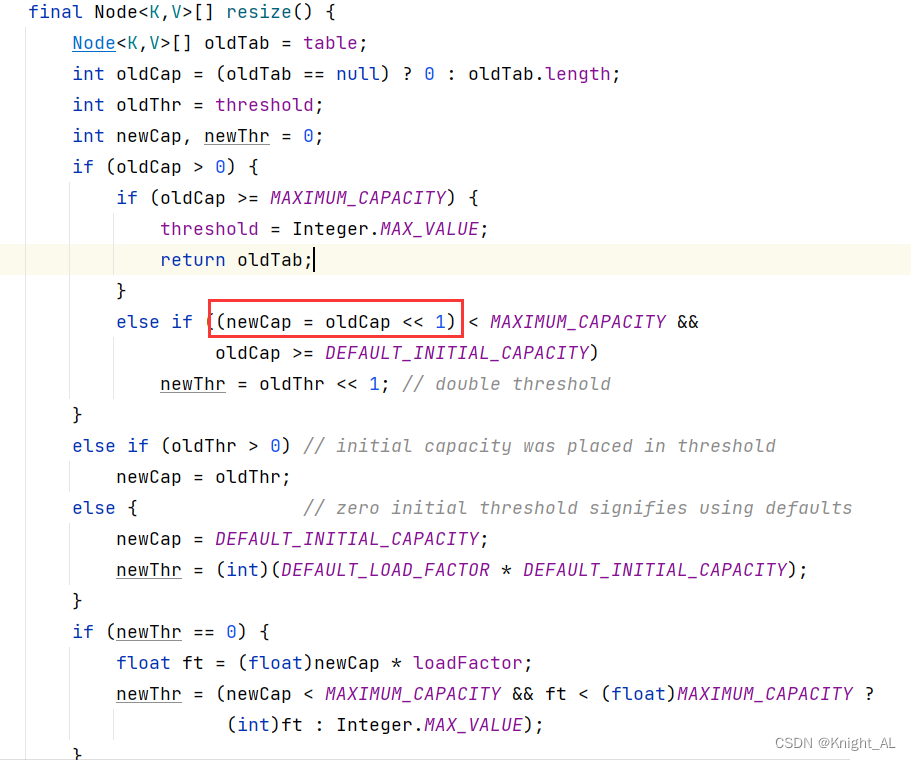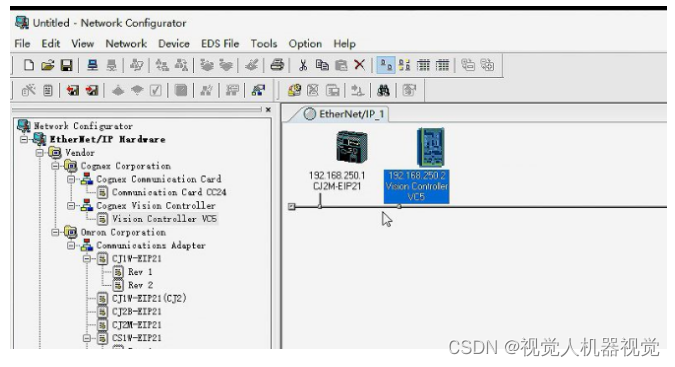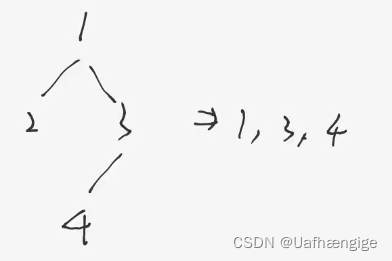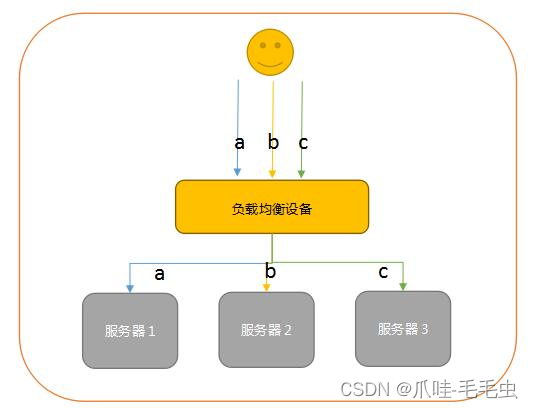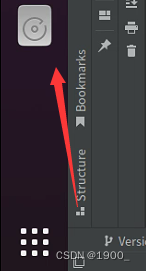七十一、声音模拟
原文:http://inventwithpython.com/bigbookpython/project71.html

类似于西蒙电子玩具,这款识记游戏使用第三方playsound模块,播放四种不同的声音,分别对应键盘上的A、S、D、F键。当你成功地重复游戏给你的图案时,图案会变得越来越长。你的短期记忆中能容纳多少声音?
如果你看一下代码,你会看到playsound.playsound()函数被传递了要播放的声音的文件名。您可以从以下网址下载声音文件:
inventwithpython.com/soundA.wav
inventwithpython.com/soundS.wav
inventwithpython.com/soundD.wav
inventwithpython.com/soundF.wav
在运行程序之前,将这些文件放在与soundmimic.py相同的文件夹中。关于playsound模块的更多信息可以在pypi.org/project/playsound找到。macOS 上的用户还必须安装来自pypi.org/project/pyobjc的pyobjc模块才能让playsound工作。
运行示例
当您运行soundmimic.py时,输出将如下所示:
Sound Mimic, by Al Sweigart email@protected
Try to memorize a pattern of A S D F letters (each with its own sound)
as it gets longer and longer.
Press Enter to begin...
`<screen clears>`
Pattern: S
`<screen clears>`
Enter the pattern:
> s
Correct!
`<screen clears>`
Pattern: S F
`<screen clears>`
Enter the pattern:
> sf
Correct!
`<screen clears>`
Pattern: S F F
`<screen clears>`
Enter the pattern:
> sff
Correct!
`<screen clears>`
Pattern: S F F D
`--snip--`
工作原理
这个程序导入了playsound模块,可以播放声音文件。该模块有一个函数playsound(),您可以向它传递一个wav或.mp3文件的文件名来播放它。在每一轮游戏中,程序会在pattern列表中添加一个随机选择的字母(A、S、D或F),并播放列表中的声音。随着pattern列表越来越长,玩家必须记住的声音文件的模式也越来越多。
"""Sound Mimic, by Al Sweigart email@protected
A pattern-matching game with sounds. Try to memorize an increasingly
longer and longer pattern of letters. Inspired by the electronic game,
Simon.
This code is available at https://nostarch.com/big-book-small-python-programming
Tags: short, beginner, game"""
import random, sys, time
# Download the sound files from these URLs (or use your own):
# https://inventwithpython.com/soundA.wav
# https://inventwithpython.com/soundS.wav
# https://inventwithpython.com/soundD.wav
# https://inventwithpython.com/soundF.wav
try:
import playsound
except ImportError:
print('The playsound module needs to be installed to run this')
print('program. On Windows, open a Command Prompt and run:')
print('pip install playsound')
print('On macOS and Linux, open a Terminal and run:')
print('pip3 install playsound')
sys.exit()
print('''Sound Mimic, by Al Sweigart email@protected
Try to memorize a pattern of A S D F letters (each with its own sound)
as it gets longer and longer.''')
input('Press Enter to begin...')
pattern = ''
while True:
print('\n' * 60) # Clear the screen by printing several newlines.
# Add a random letter to the pattern:
pattern = pattern + random.choice('ASDF')
# Display the pattern (and play their sounds):
print('Pattern: ', end='')
for letter in pattern:
print(letter, end=' ', flush=True)
playsound.playsound('sound' + letter + '.wav')
time.sleep(1) # Add a slight pause at the end.
print('\n' * 60) # Clear the screen by printing several newlines.
# Let the player enter the pattern:
print('Enter the pattern:')
response = input('> ').upper()
if response != pattern:
print('Incorrect!')
print('The pattern was', pattern)
else:
print('Correct!')
for letter in pattern:
playsound.playsound('sound' + letter + '.wav')
if response != pattern:
print('You scored', len(pattern) - 1, 'points.')
print('Thanks for playing!')
break
time.sleep(1)
探索程序
试着找出下列问题的答案。尝试对代码进行一些修改,然后重新运行程序,看看这些修改有什么影响。
- 如果删除或注释掉第 47 行的
print('\n' * 60)会发生什么? - 如果把第 62 行的
response != pattern改成False会怎么样?
七十二、海绵宝宝大小写
原文:http://inventwithpython.com/bigbookpython/project72.html

你可能见过“嘲讽海绵宝宝”表情包:一张海绵宝宝的照片,其文字说明在大写和小写字母之间交替,以表示讽刺,就像这样:使用海绵宝宝表情包不会让你变得机智。由于某些随机性,文本有时不会交替大写。
这个短程序使用upper()和lower()字符串方法将您的消息转换成“海绵宝宝大小写”程序,还被设置成其他程序可以用import将其作为模块导入,然后调用spongecase.englishToSpongecase()函数。
运行示例
当您运行spongecase.py时,输出将如下所示:
sPoNgEcAsE, bY aL sWeIGaRt email@protected
eNtEr YoUr MeSsAgE:
> Using SpongeBob memes does not make you witty.
uSiNg SpOnGeBoB MeMeS dOeS NoT mAkE YoU wItTy.
(cOpIed SpOnGeTexT to ClIpbOaRd.)
工作原理
这个程序中的代码在第 35 行使用了一个for循环来遍历message字符串中的每个字符。useUpper变量包含一个布尔变量,指示字符应该大写(如果True)还是小写(如果False)。第 46 和 47 行在 90%的迭代中切换useUpper中的布尔值(即,将其设置为相反的值)。这意味着大小写几乎总是在大写和小写之间切换。
"""sPoNgEcAsE, by Al Sweigart email@protected
Translates English messages into sPOnGEcAsE.
This code is available at https://nostarch.com/big-book-small-python-programming
Tags: tiny, beginner, word"""
import random
try:
import pyperclip # pyperclip copies text to the clipboard.
except ImportError:
pass # If pyperclip is not installed, do nothing. It's no big deal.
def main():
"""Run the Spongecase program."""
print('''sPoNgEtExT, bY aL sWeIGaRt email@protected
eNtEr YoUr MeSsAgE:''')
spongecase = englishToSpongecase(input('> '))
print()
print(spongecase)
try:
pyperclip.copy(spongecase)
print('(cOpIed SpOnGeCasE to ClIpbOaRd.)')
except:
pass # Do nothing if pyperclip wasn't installed.
def englishToSpongecase(message):
"""Return the spongecase form of the given string."""
spongecase = ''
useUpper = False
for character in message:
if not character.isalpha():
spongecase += character
continue
if useUpper:
spongecase += character.upper()
else:
spongecase += character.lower()
# Flip the case, 90% of the time.
if random.randint(1, 100) <= 90:
useUpper = not useUpper # Flip the case.
return spongecase
# If this program was run (instead of imported), run the game:
if __name__ == '__main__':
main()
探索程序
试着找出下列问题的答案。尝试对代码进行一些修改,然后重新运行程序,看看这些修改有什么影响。
- 如果把第 46 行的
random.randint(1, 100)改成random.randint(80, 100)会怎么样? - 如果删除或注释掉第 47 行的
useUpper = not useUpper会发生什么?
七十三、数独谜题
原文:http://inventwithpython.com/bigbookpython/project73.html

数独是报纸和手机应用中流行的益智游戏。数独棋盘是一个9 × 9的格子,玩家必须将数字 1 到 9 放置一次,并且只能放置一次,在每行、每列和3 × 3的子格子中。游戏开始时,一些空格已经用数字填满,称为预设。一个格式良好的数独谜题将只有一个可能的有效解。
运行示例
当您运行sudoku.py时,输出如下:
Sudoku Puzzle, by Al Sweigart email@protected
`--snip--`
A B C D E F G H I
1 . . . | . . . | . . .
2 . 7 9 | . 5 . | 1 8 .
3 8 . . | . . . | . . 7
------+-------+------
4 . . 7 | 3 . 6 | 8 . .
5 4 5 . | 7 . 8 | . 9 6
6 . . 3 | 5 . 2 | 7 . .
------+-------+------
7 7 . . | . . . | . . 5
8 . 1 6 | . 3 . | 4 2 .
9 . . . | . . . | . . .
Enter a move, or RESET, NEW, UNDO, ORIGINAL, or QUIT:
(For example, a move looks like "B4 9".)
`--snip--`
工作原理
SudokuGrid类的对象是表示数独网格的数据结构。您可以调用它们的方法来修改网格,或者检索有关网格的信息。例如,makeMove()方法在网格上放置一个数字,resetGrid()方法将网格恢复到原始状态,如果所有解决方案的数字都已放置在网格上,isSolved()将返回True。
从第 141 行开始,程序的主要部分为这个游戏使用了一个SudokuGrid对象及其方法,但是您也可以将这个类复制并粘贴到您创建的其他数独程序中,以重用它的功能。
"""Sudoku Puzzle, by Al Sweigart email@protected
The classic 9x9 number placement puzzle.
More info at https://en.wikipedia.org/wiki/Sudoku
This code is available at https://nostarch.com/big-book-small-python-programming
Tags: large, game, object-oriented, puzzle"""
import copy, random, sys
# This game requires a sudokupuzzle.txt file that contains the puzzles.
# Download it from https://inventwithpython.com/sudokupuzzles.txt
# Here's a sample of the content in this file:
# ..3.2.6..9..3.5..1..18.64....81.29..7.......8..67.82....26.95..8..2.3..9..5.1.3..
# 2...8.3...6..7..84.3.5..2.9...1.54.8.........4.27.6...3.1..7.4.72..4..6...4.1...3
# ......9.7...42.18....7.5.261..9.4....5.....4....5.7..992.1.8....34.59...5.7......
# .3..5..4...8.1.5..46.....12.7.5.2.8....6.3....4.1.9.3.25.....98..1.2.6...8..6..2.
# Set up the constants:
EMPTY_SPACE = '.'
GRID_LENGTH = 9
BOX_LENGTH = 3
FULL_GRID_SIZE = GRID_LENGTH * GRID_LENGTH
class SudokuGrid:
def __init__(self, originalSetup):
# originalSetup is a string of 81 characters for the puzzle
# setup, with numbers and periods (for the blank spaces).
# See https://inventwithpython.com/sudokupuzzles.txt
self.originalSetup = originalSetup
# The state of the sudoku grid is represented by a dictionary
# with (x, y) keys and values of the number (as a string) at
# that space.
self.grid = {}
self.resetGrid() # Set the grid state to its original setup.
self.moves = [] # Tracks each move for the undo feature.
def resetGrid(self):
"""Reset the state of the grid, tracked by self.grid, to the
state in self.originalSetup."""
for x in range(1, GRID_LENGTH + 1):
for y in range(1, GRID_LENGTH + 1):
self.grid[(x, y)] = EMPTY_SPACE
assert len(self.originalSetup) == FULL_GRID_SIZE
i = 0 # i goes from 0 to 80
y = 0 # y goes from 0 to 8
while i < FULL_GRID_SIZE:
for x in range(GRID_LENGTH):
self.grid[(x, y)] = self.originalSetup[i]
i += 1
y += 1
def makeMove(self, column, row, number):
"""Place the number at the column (a letter from A to I) and row
(an integer from 1 to 9) on the grid."""
x = 'ABCDEFGHI'.find(column) # Convert this to an integer.
y = int(row) - 1
# Check if the move is being made on a "given" number:
if self.originalSetup[y * GRID_LENGTH + x] != EMPTY_SPACE:
return False
self.grid[(x, y)] = number # Place this number on the grid.
# We need to store a separate copy of the dictionary object:
self.moves.append(copy.copy(self.grid))
return True
def undo(self):
"""Set the current grid state to the previous state in the
self.moves list."""
if self.moves == []:
return # No states in self.moves, so do nothing.
self.moves.pop() # Remove the current state.
if self.moves == []:
self.resetGrid()
else:
# set the grid to the last move.
self.grid = copy.copy(self.moves[-1])
def display(self):
"""Display the current state of the grid on the screen."""
print(' A B C D E F G H I') # Display column labels.
for y in range(GRID_LENGTH):
for x in range(GRID_LENGTH):
if x == 0:
# Display row label:
print(str(y + 1) + ' ', end='')
print(self.grid[(x, y)] + ' ', end='')
if x == 2 or x == 5:
# Display a vertical line:
print('| ', end='')
print() # Print a newline.
if y == 2 or y == 5:
# Display a horizontal line:
print(' ------+-------+------')
def _isCompleteSetOfNumbers(self, numbers):
"""Return True if numbers contains the digits 1 through 9."""
return sorted(numbers) == list('123456789')
def isSolved(self):
"""Returns True if the current grid is in a solved state."""
# Check each row:
for row in range(GRID_LENGTH):
rowNumbers = []
for x in range(GRID_LENGTH):
number = self.grid[(x, row)]
rowNumbers.append(number)
if not self._isCompleteSetOfNumbers(rowNumbers):
return False
# Check each column:
for column in range(GRID_LENGTH):
columnNumbers = []
for y in range(GRID_LENGTH):
number = self.grid[(column, y)]
columnNumbers.append(number)
if not self._isCompleteSetOfNumbers(columnNumbers):
return False
# Check each box:
for boxx in (0, 3, 6):
for boxy in (0, 3, 6):
boxNumbers = []
for x in range(BOX_LENGTH):
for y in range(BOX_LENGTH):
number = self.grid[(boxx + x, boxy + y)]
boxNumbers.append(number)
if not self._isCompleteSetOfNumbers(boxNumbers):
return False
return True
print('''Sudoku Puzzle, by Al Sweigart email@protected
Sudoku is a number placement logic puzzle game. A Sudoku grid is a 9x9
grid of numbers. Try to place numbers in the grid such that every row,
column, and 3x3 box has the numbers 1 through 9 once and only once.
For example, here is a starting Sudoku grid and its solved form:
5 3 . | . 7 . | . . . 5 3 4 | 6 7 8 | 9 1 2
6 . . | 1 9 5 | . . . 6 7 2 | 1 9 5 | 3 4 8
. 9 8 | . . . | . 6 . 1 9 8 | 3 4 2 | 5 6 7
------+-------+------ ------+-------+------
8 . . | . 6 . | . . 3 8 5 9 | 7 6 1 | 4 2 3
4 . . | 8 . 3 | . . 1 --> 4 2 6 | 8 5 3 | 7 9 1
7 . . | . 2 . | . . 6 7 1 3 | 9 2 4 | 8 5 6
------+-------+------ ------+-------+------
. 6 . | . . . | 2 8 . 9 6 1 | 5 3 7 | 2 8 4
. . . | 4 1 9 | . . 5 2 8 7 | 4 1 9 | 6 3 5
. . . | . 8 . | . 7 9 3 4 5 | 2 8 6 | 1 7 9
''')
input('Press Enter to begin...')
# Load the sudokupuzzles.txt file:
with open('sudokupuzzles.txt') as puzzleFile:
puzzles = puzzleFile.readlines()
# Remove the newlines at the end of each puzzle:
for i, puzzle in enumerate(puzzles):
puzzles[i] = puzzle.strip()
grid = SudokuGrid(random.choice(puzzles))
while True: # Main game loop.
grid.display()
# Check if the puzzle is solved.
if grid.isSolved():
print('Congratulations! You solved the puzzle!')
print('Thanks for playing!')
sys.exit()
# Get the player's action:
while True: # Keep asking until the player enters a valid action.
print() # Print a newline.
print('Enter a move, or RESET, NEW, UNDO, ORIGINAL, or QUIT:')
print('(For example, a move looks like "B4 9".)')
action = input('> ').upper().strip()
if len(action) > 0 and action[0] in ('R', 'N', 'U', 'O', 'Q'):
# Player entered a valid action.
break
if len(action.split()) == 2:
space, number = action.split()
if len(space) != 2:
continue
column, row = space
if column not in list('ABCDEFGHI'):
print('There is no column', column)
continue
if not row.isdecimal() or not (1 <= int(row) <= 9):
print('There is no row', row)
continue
if not (1 <= int(number) <= 9):
print('Select a number from 1 to 9, not ', number)
continue
break # Player entered a valid move.
print() # Print a newline.
if action.startswith('R'):
# Reset the grid:
grid.resetGrid()
continue
if action.startswith('N'):
# Get a new puzzle:
grid = SudokuGrid(random.choice(puzzles))
continue
if action.startswith('U'):
# Undo the last move:
grid.undo()
continue
if action.startswith('O'):
# View the original numbers:
originalGrid = SudokuGrid(grid.originalSetup)
print('The original grid looked like this:')
originalGrid.display()
input('Press Enter to continue...')
if action.startswith('Q'):
# Quit the game.
print('Thanks for playing!')
sys.exit()
# Handle the move the player selected.
if grid.makeMove(column, row, number) == False:
print('You cannot overwrite the original grid\'s numbers.')
print('Enter ORIGINAL to view the original grid.')
input('Press Enter to continue...')
探索程序
试着找出下列问题的答案。尝试对代码进行一些修改,然后重新运行程序,看看这些修改有什么影响。
- 删除或重命名
sudokuzicks.txt文件并运行程序会出现什么错误? - 如果把第 91 行的
str(y + 1)改成str(y)会怎么样? - 如果把第 99 行的
if y == 2 or y == 5:改成if y == 1 or y == 6:会怎么样?
七十四、文本到语音转换器
原文:http://inventwithpython.com/bigbookpython/project74.html

这个程序演示了第三方模块pyttsx3的使用。您输入的任何消息都会被操作系统的文本到语音转换功能大声朗读出来。虽然计算机生成的语音是计算机科学的一个极其复杂的分支,但pyttsx3模块为它提供了一个简单的接口,使这个小程序适合初学者。一旦你学会了如何使用这个模块,你就可以把生成的语音添加到你自己的程序中。
关于pyttsx3模块的更多信息可以在pypi.org/project/pyttsx3找到。
运行示例
当您运行texttospeechtalker.py时,输出如下:
Text To Speech Talker, by Al Sweigart email@protected
Text-to-speech using the pyttsx3 module, which in turn uses
the NSSpeechSynthesizer (on macOS), SAPI5 (on Windows), or
eSpeak (on Linux) speech engines.
Enter the text to speak, or QUIT to quit.
> Hello. My name is Guido van Robot.
`<computer speaks text out loud>`
> quit
Thanks for playing!
工作原理
这个程序很短,因为pyttsx3模块处理所有的文本到语音代码。要使用该模块,请按照本书介绍中的说明进行安装。一旦你这样做了,你的 Python 脚本可以用import pyttsx3导入它并调用pyttsc3.init()函数。这将返回一个代表文本到语音转换引擎的Engine对象。这个对象有一个say()方法,当您运行runAndWait()方法时,您可以将一个文本字符串传递给它,以便计算机朗读。
"""Text To Speech Talker, by Al Sweigart email@protected
An example program using the text-to-speech features of the pyttsx3
module.
View this code at https://nostarch.com/big-book-small-python-projects
Tags: tiny, beginner"""
import sys
try:
import pyttsx3
except ImportError:
print('The pyttsx3 module needs to be installed to run this')
print('program. On Windows, open a Command Prompt and run:')
print('pip install pyttsx3')
print('On macOS and Linux, open a Terminal and run:')
print('pip3 install pyttsx3')
sys.exit()
tts = pyttsx3.init() # Initialize the TTS engine.
print('Text To Speech Talker, by Al Sweigart email@protected')
print('Text-to-speech using the pyttsx3 module, which in turn uses')
print('the NSSpeechSynthesizer (on macOS), SAPI5 (on Windows), or')
print('eSpeak (on Linux) speech engines.')
print()
print('Enter the text to speak, or QUIT to quit.')
while True:
text = input('> ')
if text.upper() == 'QUIT':
print('Thanks for playing!')
sys.exit()
tts.say(text) # Add some text for the TTS engine to say.
tts.runAndWait() # Make the TTS engine say it.
探索程序
这是一个基础程序,所以没有太多的选项来定制它。相反,考虑一下你的其他程序会从文本到语音转换中受益。
七十五、三卡蒙特
原文:http://inventwithpython.com/bigbookpython/project75.html

三卡蒙特是一个常见的骗局,对轻信的游客和其他容易的标志。三张扑克牌,其中一张是红心皇后,正面朝下放在一个纸板盒上。庄家迅速重新排列纸牌,然后让马克挑选红心皇后。但是庄家可以使用各种各样的伎俩来隐藏卡片或欺骗,保证受害者永远不会赢。庄家还经常在人群中找到一些骗子,他们与庄家秘密合作,但假装赢了游戏(让受害者认为他们也能赢)或故意输得很惨(让受害者认为他们能做得更好)。
这个程序展示了三张牌,然后快速描述了一系列的交换。最后,它清空屏幕,玩家必须选择一张牌。你能跟上“红娘”吗?对于真正的三卡蒙特体验,您可以启用作弊功能,这将导致玩家总是输,即使他们选择了正确的卡。
运行示例
当您运行threecardmonte.py时,输出将如下所示:
Three-Card Monte, by Al Sweigart email@protected
Find the red lady (the Queen of Hearts)! Keep an eye on how
the cards move.
Here are the cards:
___ ___ ___
|J | |Q | |8 |
| ♦ | | ♥ | | ♣ |
|__J| |__Q| |__8|
Press Enter when you are ready to begin...
swapping left and middle...
swapping right and middle...
swapping middle and left...
swapping right and left...
swapping left and middle...
`--snip--`
`<screen clears>`
Which card has the Queen of Hearts? (LEFT MIDDLE RIGHT)
> middle
___ ___ ___
|Q | |8 | |J |
| ♥ | | ♣ | | ♦ |
|__Q| |__8| |__J|
You lost!
Thanks for playing, sucker!
工作原理
在这个程序中,我们用一个(rank, suit)元组来表示一张扑克牌。等级是代表卡号的字符串,如'2'、'10'、'Q'或'K',花色是心形、梅花、黑桃或菱形表情符号的字符串。因为你不能用键盘输入表情符号,我们将在第 16 到 19 行使用chr()函数调用来产生它们。元组('9', '♦')代表方块 9。
第 28 到 43 行的displayCards()函数解释这些元组并在屏幕上显示 ASCII 艺术画表示,而不是直接打印出来,就像项目 4“21 点”一样。这个函数的cards参数是扑克牌元组的列表,允许在一行中显示多张牌。
"""Three-Card Monte, by Al Sweigart email@protected
Find the Queen of Hearts after cards have been swapped around.
(In the real-life version, the scammer palms the Queen of Hearts so you
always lose.)
More info at https://en.wikipedia.org/wiki/Three-card_Monte
This code is available at https://nostarch.com/big-book-small-python-programming
Tags: large, card game, game"""
import random, time
# Set up the constants:
NUM_SWAPS = 16 # (!) Try changing this to 30 or 100.
DELAY = 0.8 # (!) Try changing this 2.0 or 0.0.
# The card suit characters:
HEARTS = chr(9829) # Character 9829 is '♥'
DIAMONDS = chr(9830) # Character 9830 is '♦'
SPADES = chr(9824) # Character 9824 is '♠'
CLUBS = chr(9827) # Character 9827 is '♣'
# A list of chr() codes is at https://inventwithpython.com/chr
# The indexes of a 3-card list:
LEFT = 0
MIDDLE = 1
RIGHT = 2
def displayCards(cards):
"""Display the cards in "cards", which is a list of (rank, suit)
tuples."""
rows = ['', '', '', '', ''] # Stores the text to display.
for i, card in enumerate(cards):
rank, suit = card # The card is a tuple data structure.
rows[0] += ' ___ ' # Print the top line of the card.
rows[1] += '|{} | '.format(rank.ljust(2))
rows[2] += '| {} | '.format(suit)
rows[3] += '|_{}| '.format(rank.rjust(2, '_'))
# Print each row on the screen:
for i in range(5):
print(rows[i])
def getRandomCard():
"""Returns a random card that is NOT the Queen of Hearts."""
while True: # Make cards until you get a non-Queen of hearts.
rank = random.choice(list('23456789JQKA') + ['10'])
suit = random.choice([HEARTS, DIAMONDS, SPADES, CLUBS])
# Return the card as long as it's not the Queen of Hearts:
if rank != 'Q' and suit != HEARTS:
return (rank, suit)
print('Three-Card Monte, by Al Sweigart email@protected')
print()
print('Find the red lady (the Queen of Hearts)! Keep an eye on how')
print('the cards move.')
print()
# Show the original arrangement:
cards = [('Q', HEARTS), getRandomCard(), getRandomCard()]
random.shuffle(cards) # Put the Queen of Hearts in a random place.
print('Here are the cards:')
displayCards(cards)
input('Press Enter when you are ready to begin...')
# Print the swaps:
for i in range(NUM_SWAPS):
swap = random.choice(['l-m', 'm-r', 'l-r', 'm-l', 'r-m', 'r-l'])
if swap == 'l-m':
print('swapping left and middle...')
cards[LEFT], cards[MIDDLE] = cards[MIDDLE], cards[LEFT]
elif swap == 'm-r':
print('swapping middle and right...')
cards[MIDDLE], cards[RIGHT] = cards[RIGHT], cards[MIDDLE]
elif swap == 'l-r':
print('swapping left and right...')
cards[LEFT], cards[RIGHT] = cards[RIGHT], cards[LEFT]
elif swap == 'm-l':
print('swapping middle and left...')
cards[MIDDLE], cards[LEFT] = cards[LEFT], cards[MIDDLE]
elif swap == 'r-m':
print('swapping right and middle...')
cards[RIGHT], cards[MIDDLE] = cards[MIDDLE], cards[RIGHT]
elif swap == 'r-l':
print('swapping right and left...')
cards[RIGHT], cards[LEFT] = cards[LEFT], cards[RIGHT]
time.sleep(DELAY)
# Print several new lines to hide the swaps.
print('\n' * 60)
# Ask the user to find the red lady:
while True: # Keep asking until LEFT, MIDDLE, or RIGHT is entered.
print('Which card has the Queen of Hearts? (LEFT MIDDLE RIGHT)')
guess = input('> ').upper()
# Get the index in cards for the position that the player entered:
if guess in ['LEFT', 'MIDDLE', 'RIGHT']:
if guess == 'LEFT':
guessIndex = 0
elif guess == 'MIDDLE':
guessIndex = 1
elif guess == 'RIGHT':
guessIndex = 2
break
# (!) Uncomment this code to make the player always lose:
#if cards[guessIndex] == ('Q', HEARTS):
# # Player has won, so let's move the queen.
# possibleNewIndexes = [0, 1, 2]
# possibleNewIndexes.remove(guessIndex) # Remove the queen's index.
# newInd = random.choice(possibleNewIndexes) # Choose a new index.
# # Place the queen at the new index:
# cards[guessIndex], cards[newInd] = cards[newInd], cards[guessIndex]
displayCards(cards) # Show all the cards.
# Check if the player won:
if cards[guessIndex] == ('Q', HEARTS):
print('You won!')
print('Thanks for playing!')
else:
print('You lost!')
print('Thanks for playing, sucker!')
在输入源代码并运行几次之后,尝试对其进行实验性的修改。标有(!)的注释对你可以做的小改变有建议。你也可以自己想办法做到以下几点:
- 使用项目 57“进度条”中的退格打印技术,简单显示每条交换信息,然后打印
\b字符,在打印下一条信息之前将其删除。 - 创建一个增加难度的四卡蒙特游戏。
探索程序
试着找出下列问题的答案。尝试对代码进行一些修改,然后重新运行程序,看看这些修改有什么影响。
- 如果把第 64 行的
[('Q', HEARTS), getRandomCard(), getRandomCard()]改成[('Q', HEARTS), ('Q', HEARTS), ('Q', HEARTS)]会怎么样? - 如果把第 49 行的
list('23456789JQKA')改成list('ABCDEFGHIJK')会怎么样? - 如果删除或注释掉第 93 行的
time.sleep(DELAY)会怎么样?

